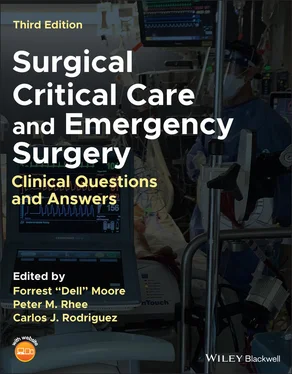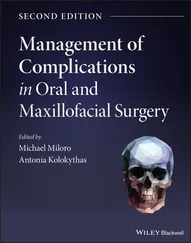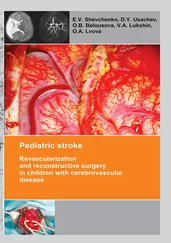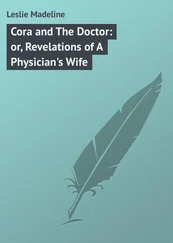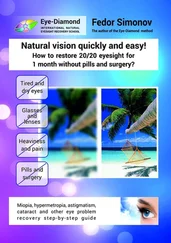Surgical Critical Care and Emergency Surgery
Здесь есть возможность читать онлайн «Surgical Critical Care and Emergency Surgery» — ознакомительный отрывок электронной книги совершенно бесплатно, а после прочтения отрывка купить полную версию. В некоторых случаях можно слушать аудио, скачать через торрент в формате fb2 и присутствует краткое содержание. Жанр: unrecognised, на английском языке. Описание произведения, (предисловие) а так же отзывы посетителей доступны на портале библиотеки ЛибКат.
- Название:Surgical Critical Care and Emergency Surgery
- Автор:
- Жанр:
- Год:неизвестен
- ISBN:нет данных
- Рейтинг книги:3 / 5. Голосов: 1
-
Избранное:Добавить в избранное
- Отзывы:
-
Ваша оценка:
- 60
- 1
- 2
- 3
- 4
- 5
Surgical Critical Care and Emergency Surgery: краткое содержание, описание и аннотация
Предлагаем к чтению аннотацию, описание, краткое содержание или предисловие (зависит от того, что написал сам автор книги «Surgical Critical Care and Emergency Surgery»). Если вы не нашли необходимую информацию о книге — напишите в комментариях, мы постараемся отыскать её.
Surgical Critical Care and Emergency Surgery Surgical Critical Care and Emergency Surgery,
Surgical Critical Care and Emergency Surgery
Surgical Critical Care and Emergency Surgery — читать онлайн ознакомительный отрывок
Ниже представлен текст книги, разбитый по страницам. Система сохранения места последней прочитанной страницы, позволяет с удобством читать онлайн бесплатно книгу «Surgical Critical Care and Emergency Surgery», без необходимости каждый раз заново искать на чём Вы остановились. Поставьте закладку, и сможете в любой момент перейти на страницу, на которой закончили чтение.
Интервал:
Закладка:
Ryan Malcom, MDDivision of Trauma and Acute Care Surgery New York Medical College Westchester Medical Center Valhalla, NY, USA
Toni Manougian MD, MBADepartment of Critical Care Anesthesiology New York Medical College Westchester Medical Center Valhalla, NY, USA
Matthew J. Martin, MDTrauma and Acute Care Surgery Service Scripps Mercy Hospital San Diego, CA, USA
Kazuhide Matsushima, MDDivision of Acute Care Surgery University of Southern California LAC+USC Medical Center Los Angeles, CA, USA
Adrian A. Maung, MD, FCCMYale School of Medicine New Haven, CT, USA
Richard S. Miller, MDDepartment of Surgery TCU & UNTHSC School of Medicine John Peter Smith Health Fort Worth, TX, USA
William Mohr III, MDRegions Hospital Saint Paul, MN, USA
Ida Molavi, MDDepartment of Trauma and Acute Care Surgery Louisiana State University Health Shreveport, LA, USA
Thomas Muse, MDDepartment of Trauma and Acute Care Surgery Department of Surgery University of Alabama at Birmingham Birmingham, AL, USA
Christopher S. Nelson, MDDivision of Acute Care Surgery Department of Surgery University of Missouri Columbia, MO, USA
Omar Obaid, MDDivision of Trauma, Critical Care Burns, and Emergency Surgery Department of Surgery University of Arizona Tucson, AZ, USA
Thomas A. O’Hara, DODwight D. Eisenhower Army Medical Center Fort Gordon, GA, USA
Terence O’Keeffe, MB ChBAugusta University Medical Center Augusta, GA, USA
Kristine Tolentino Parra, MDNaval Medical Center San Diego, CA, USA
Gregory S. Peirce, MDWomack Army Medical Center Fort Bragg, NC, USA
Annalise Penikis, MDUniversity of Maryland Medical Center Baltimore, MD, USA
Herb A. Phelan, MD, MSCSDepartment of Surgery, LSU School of Medicine New Orleans, LA, USA
Kartik Prabhakaran, MDNew York Medical College Westchester Medical Center Valhalla, NY, USA
Theodore Pratt, MDNaval Medical Center San Diego, CA, USA
Eric Raschke, DOMadigan Army Medical Center Tacoma, WA, USA
Shariq Raza, MDTrauma Surgery, Surgical Critical Care & Emergency Surgery Perelman School of Medicine University of Pennsylvania Philadelphia, PA, USA
Peter M. Rhee, MDDivision of Trauma and Acute Care Surgery New York Medical College Westchester Medical Center Valhalla, NY, USA
Daniel Roubik, MDBrooke Army Medical Center San Antonio, TX, USA
Navdeep Samra, MDLSU Health Shreveport, LA, USA
Jaideep Sandhu, MBBS, MPHCity of Hope National Medical Center Duarte, CA, USA
Jarrett Santorelli, MDDivision of Trauma, Acute Care Surgery, Surgical Critical Care and Burns University of California San Diego San Diego, CA, USA
Fariha Sheikh, MDDivision of Trauma and Critical Care Surgery Rutgers New Jersey Medical School University Hospital Newark, NJ, USA
Jared Sheppard, MDDivision of Acute Care Surgery, Department of Surgery University of Missouri Columbia, MO, USA
Ilya Shnaydman, MDDivision of Trauma and Acute Care Surgery New York Medical College Westchester Medical Center Valhalla, NY, USA
Elise Sienicki, MDNaval Medical Center, San Diego, CA, USA
Brandt Sisson, MDNaval Medical Center San Diego, CA, USA
Michael C. Smith, MDDivision of Trauma and Surgical Critical Care Vanderbilt University Medical Center Nashville, TN, USA
Collin Stewart, MDBanner University Medical Center University of Arizona College of Medicine Tucson, AZ, USA
Michelle Strong, MD, PhDTrauma and Acute Care Surgeon Austin, TX, USA
Jonathan Swisher, MDLTC, MC US Army William Beaumont Army Medical Center El Paso, TX, USA
Andrew Tang, MDUniversity of Arizona College of Medicine Banner University Medical Center Tucson, AZ, USA
Anne Warner, MDDepartment of Surgery Christiana Care Health Care System Newark, DE, USA
Cassandra Q. White, MDDepartment of Surgery Augusta University Augusta, GA, USA
Andrew J. Young, MDDivision of Trauma, Critical Care and Burn The Ohio State University Columbus, OH, USA
Bardiya Zangbar, MDDivision of Trauma and Acute Care Surgery New York Medical College Westchester Medical Center Valhalla, NY, USA
About the Companion Website
This book is accompanied by a companion website
www.wiley.com/go/surgicalcriticalcare3e 
The website features:
Interactive multiple choice questions
1 Respiratory and Cardiovascular Physiology
Anne Warner, MD, Harsh Desai, MD, and Frederick Giberson, MD
Department of Surgery, Christiana Care Health Care System, Newark, DE, USA
1 In a patient who develops ARDS, the addition of PEEP in optimizing ventilatory support has which of the following effects?Maximal alveolar recruitment with inspiration.Decreasing mean airway pressure.Decreased right ventricular afterload.Improvement of functional residual capacity (FRC).Increasing left ventricular afterload.The use of positive end‐expiratory pressure (PEEP) as part of the ARDS ventilatory strategy has been shown to improve the functional residual capacity (FRC) above the closing pressure of alveoli, thereby preventing alveolar collapse. PEEP maximizes alveolar recruitment at end expiration, not inspiration. The addition of PEEP increases inflation pressure, thereby increasing peak alveolar pressure and ultimately mean airway pressure. Increased PEEP increases pulmonary vascular resistance impeding right vascular stroke volume and thereby left ventricular filling. It also decreases the transmural pressure – the pressure needed to be overcome in order to eject stroke volume – thereby decreasing left ventricular afterload.Answer: DBriel M, Meade M, Mercat A, et al. Higher vs lower positive end‐expiratory pressure in patients with acute lung injury and acute respiratory distress syndrome. JAMA. 2010; 303 (9): 865–873.Schmitt JM, Viellard‐Baron A, Augarde R, et al. Positive end‐expiratory pressure titration in acute respiratory distress syndrome patients: impact on right ventricular outflow impedance evaluated by pulmonary artery Doppler flow velocity measurements. Crit Care Med. 2001; 29: 1154–1158.
2 Which of the following is NOT a component of the inflammatory cascade leading to lung injury in ARDS?Injury to type I and type II epithelial cells within the alveoli.Capillary endothelial dysregulation resulting in recruitment of neutrophils.Sequestration of predominantly lymphocytes within the pulmonary microcirculation.Release of cytoplasmic granules from neutrophil degranulation.Exudation of protein‐rich fluid into the distal airspaces.The inflammatory cascade in ARDS is thought to be initiated by activation of circulating neutrophils by the release of IL‐1 and TNF by macrophages and monocytes. Endothelial dysregulation attracts and retains neutrophils with subsequent sequestration within the pulmonary microcirculation. This occurs through adhesion of neutrophils to endothelial cells and neutrophil stiffening. Neutrophils then move into lung parenchyma and degranulate propagating injury to the type I and II epithelial cells within the alveoli allowing for exudation of protein‐rich fluid, erythrocytes, and platelets into the distal airspaces.Answer: CAbraham E. Neutrophils and acute lung injury. Crit Care Med. 2003; 31(supp): S195–S199.
Читать дальшеИнтервал:
Закладка:
Похожие книги на «Surgical Critical Care and Emergency Surgery»
Представляем Вашему вниманию похожие книги на «Surgical Critical Care and Emergency Surgery» списком для выбора. Мы отобрали схожую по названию и смыслу литературу в надежде предоставить читателям больше вариантов отыскать новые, интересные, ещё непрочитанные произведения.
Обсуждение, отзывы о книге «Surgical Critical Care and Emergency Surgery» и просто собственные мнения читателей. Оставьте ваши комментарии, напишите, что Вы думаете о произведении, его смысле или главных героях. Укажите что конкретно понравилось, а что нет, и почему Вы так считаете.
